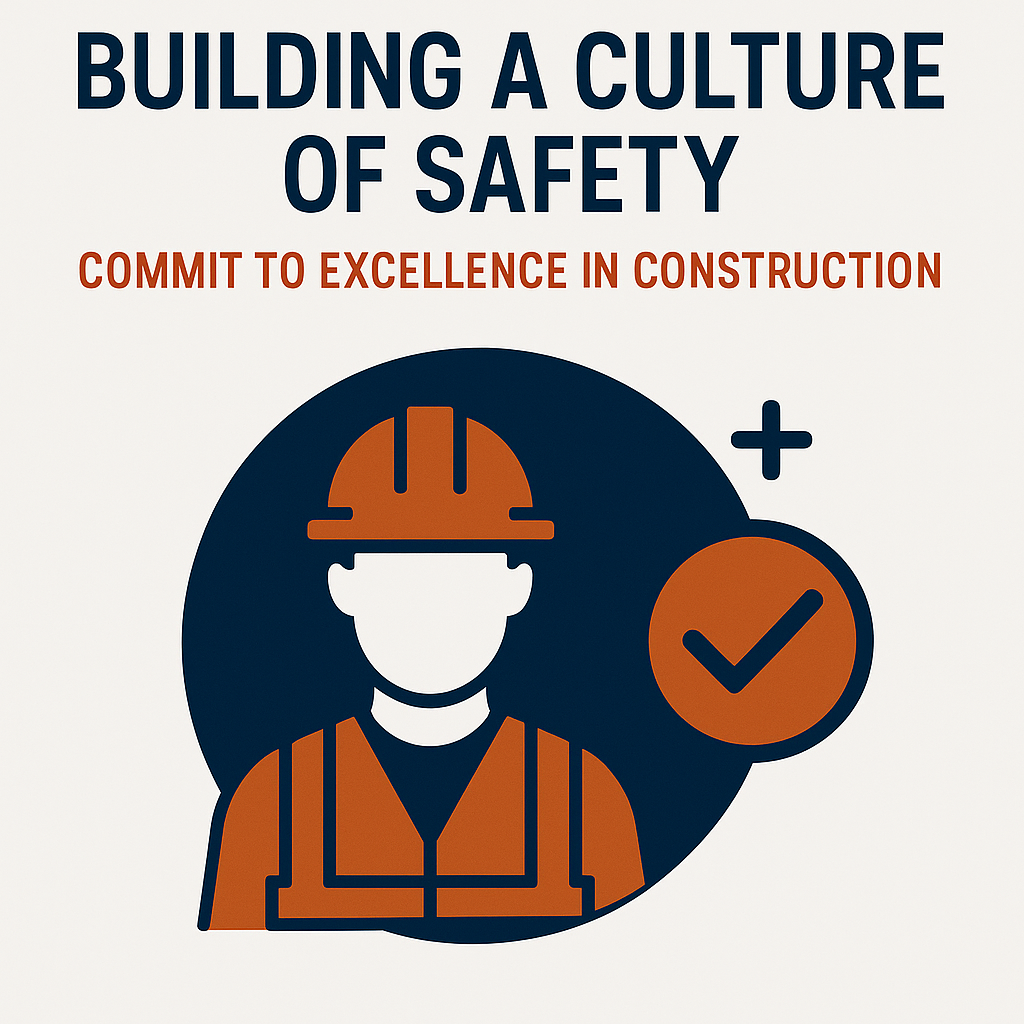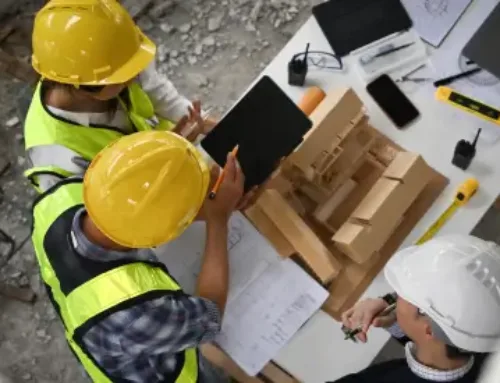Building a Culture of Safety: Commit to Excellence in Construction
By: Chuck Twellmann, MS, PE, PMP, Manager, Transmission Construction Services, Ameren
At a recent leadership meeting, our company president shared the Nine Principles for Organizational Excellence, developed by Quint Studer, and invited various leaders to reflect on how these principles manifest in our daily operations. As I listened, I began considering how each principle directly influences our fieldwork, particularly in construction safety. This reflection inspired the idea for a blog series exploring how each of Studer’s principles can shape and enhance our safety culture on job sites and in the field.
For this first article, we’ll focus on Principle 1: Commit to Excellence.
Elevating Safety Through a Commitment to Excellence
Committing to excellence involves setting high standards and expecting everyone—from executive leaders to field crews—to operate with purpose, integrity, and discipline. In construction, this standard must encompass a zero-compromise approach to safety. While production schedules and budgets are important, no outcome should ever be prioritized above human life and well-being.
Organizations that truly commit to excellence embed safety in their values—not just on posters or PowerPoint slides, but in their leadership behaviors, hiring practices, and project planning. It becomes part of how decisions are made and how success is defined. This kind of cultural alignment doesn’t happen by accident. It happens when leaders consistently model the right behaviors, communicate a clear vision, and back up words with action.
The Crucial Role of Leadership in Safety Outcomes
Leadership behavior is one of the most predictive factors in shaping safety outcomes. When leaders visibly prioritize safety, employees are more likely to adopt safe behaviors themselves. Sankar and Anandh (2023) emphasize that safety-specific transformational leadership—where leaders actively communicate a clear safety vision and motivate teams toward it—significantly improves safety performance in construction settings.
Similarly, Ibrahim et al. (2023) found that top executive commitment to quality and safety strongly influences overall organizational performance in construction firms. Their research reinforces the idea that safety excellence is not achieved through isolated efforts but through a shared leadership mindset across all levels.
Furthermore, Tang (2024) highlights that positive leadership behaviors significantly influence safety compliance behavior, accounting for 22.8% of its variation, while safety participation emerged as a stronger predictor, explaining 33.6% of the variance. This underscores the critical need for collaborative efforts among stakeholders to build safer, more efficient construction environments.
Unfortunately, when leadership commitment is inconsistent—say, when safety is emphasized at meetings but disregarded in the field workers quickly notice the disconnect. This erodes trust, undermines accountability, and increases risk exposure. Excellence requires consistency: consistent values, consistent expectations, and consistent follow-through.
Practical Applications in Construction Environments
- Reinforce Safety as a Core Value
Safety must be reinforced at every opportunity, not only during incidents or inspections. Toolbox talks, project planning meetings, and even daily check-ins should include safety as a standing agenda item.
- Role Model the Standard
When senior leaders wear proper PPE, follow entry protocols, and ask safety-focused questions during site visits, they communicate that safety is non-negotiable. It also empowers front-line supervisors to do the same without fear of seeming overly cautious.
- Connect Safety to Performance
Too often, performance is measured in output alone. Organizations committed to excellence reframe performance to include safety metrics, and they ensure those metrics influence recognition, promotions, and incentives.
- Never Settle for “Good Enough”
Excellence means going beyond compliance. Is your safety training engaging? Are hazard observations used for learning, or just compliance? Are near misses investigated and shared? These are areas where a commitment to excellence turns average safety programs into transformative ones.
Final Thoughts
Committing to excellence is more than a leadership slogan—it’s a standard of behavior that shapes how work gets done. In construction, that means embedding safety into every layer of decision-making, accountability, and communication. Leaders must consistently model the behaviors they expect, align organizational systems to support safety, and ensure that excellence is something crews feel, not just hear about.
When safety becomes part of an organization’s identity, not just its compliance checklist, we don’t just prevent incidents. We build teams that trust each other, take pride in their work, and go home safely every day.
Author:
Chuck Twellmann, MS, PE, PMP, Manager Transmission Construction Services, Ameren
References
Ibrahim, M. R., Muhammad, D. U., Muhammad, B., Okwe, J. A., & Agidani, J. (2023). The key to organizational and construction excellence: A study of total quality management. International Journal of Construction Management. https://urldefense.com/v3/__https://doi.org/10.1080/15623599.2023.2204171__;!!L3YRgMg!ZI_idY_6mCE9vEgP0HvyQ8WumMC0oXj0hEX42K-j_8d2oQz-xqhdBihz7mlLMY8jIqIhFRy7aGfmqcjoNbn8$
Sankar, S. S., & Anandh, K. S. (2023). Unveiling the impact of safety leadership styles in the construction industry. Administrative Sciences, 13(9), 212. https://urldefense.com/v3/__https://doi.org/10.3390/admsci13090212__;!!L3YRgMg!ZI_idY_6mCE9vEgP0HvyQ8WumMC0oXj0hEX42K-j_8d2oQz-xqhdBihz7mlLMY8jIqIhFRy7aGfmqUJPsJHv$
Tang, Z. (2024). Safety culture in the construction industry: A proposed enhanced safety management program. Journal of Business and Management Studies, 7(1), 98–125. https://urldefense.com/v3/__https://www.researchgate.net/publication/388335951_Safety_Culture_in_The_Construction_Industry_A_Proposed_Enhanced_Safety_Management_Program__;!!L3YRgMg!ZI_idY_6mCE9vEgP0HvyQ8WumMC0oXj0hEX42K-j_8d2oQz-xqhdBihz7mlLMY8jIqIhFRy7aGfmqQpNorRO$






